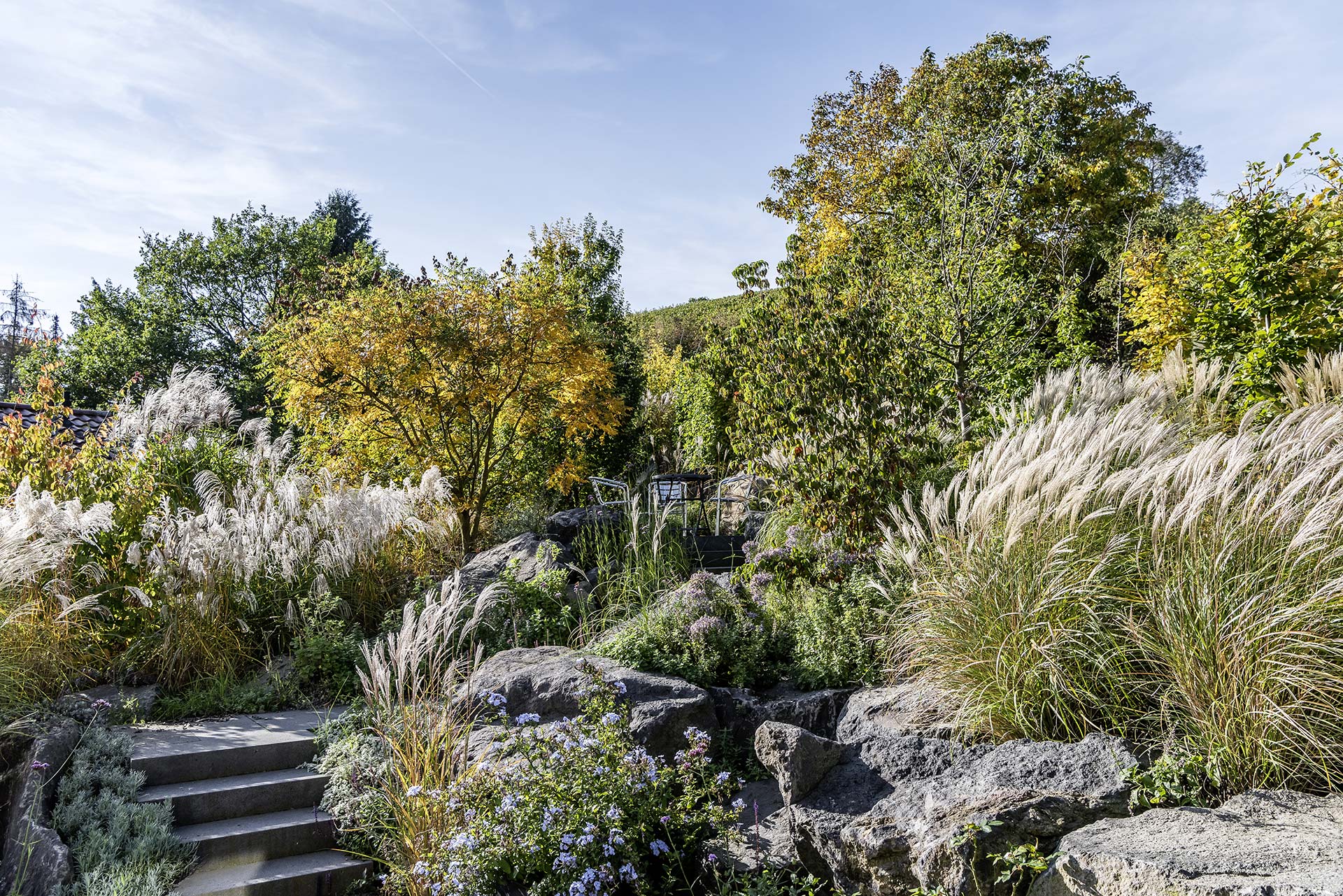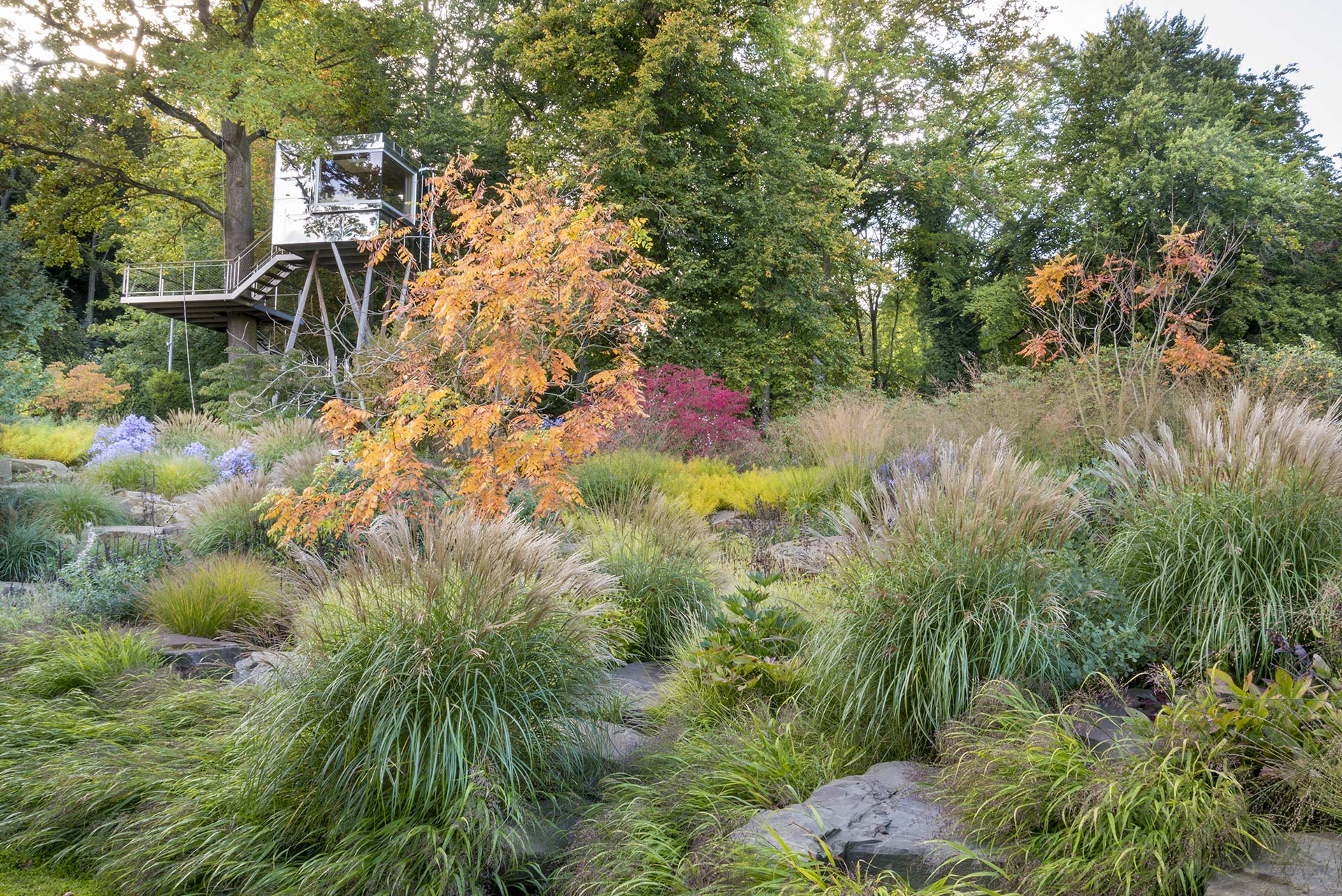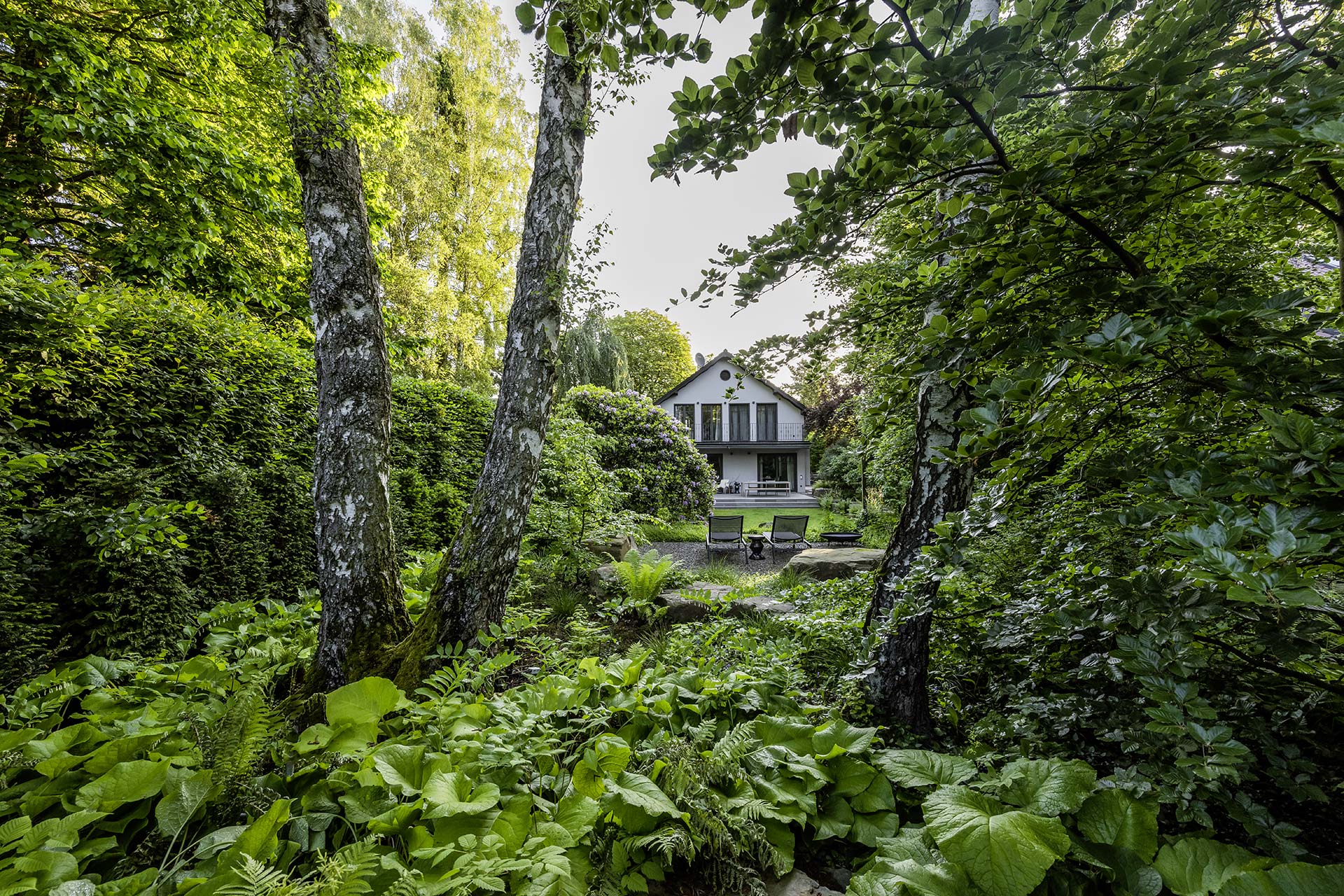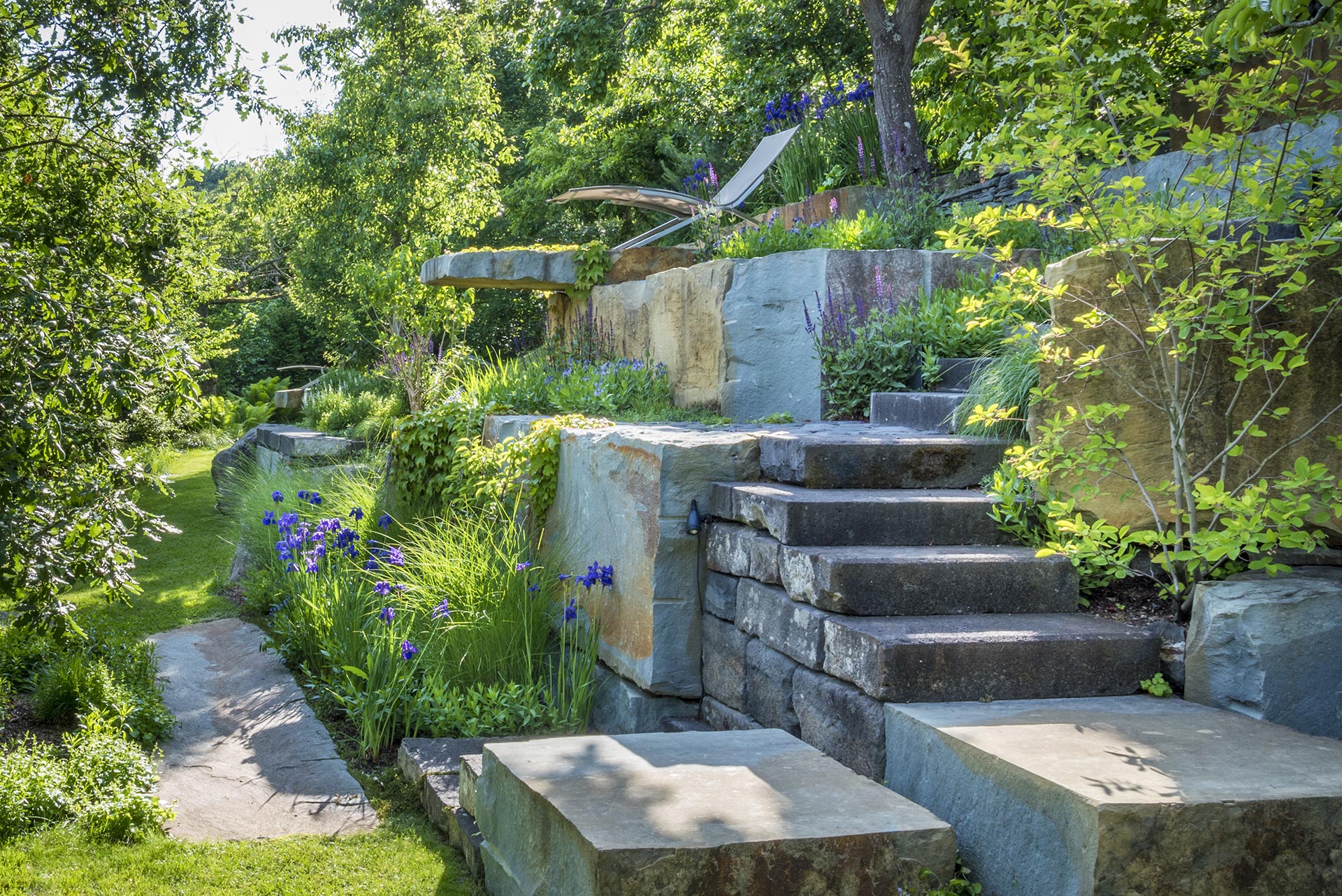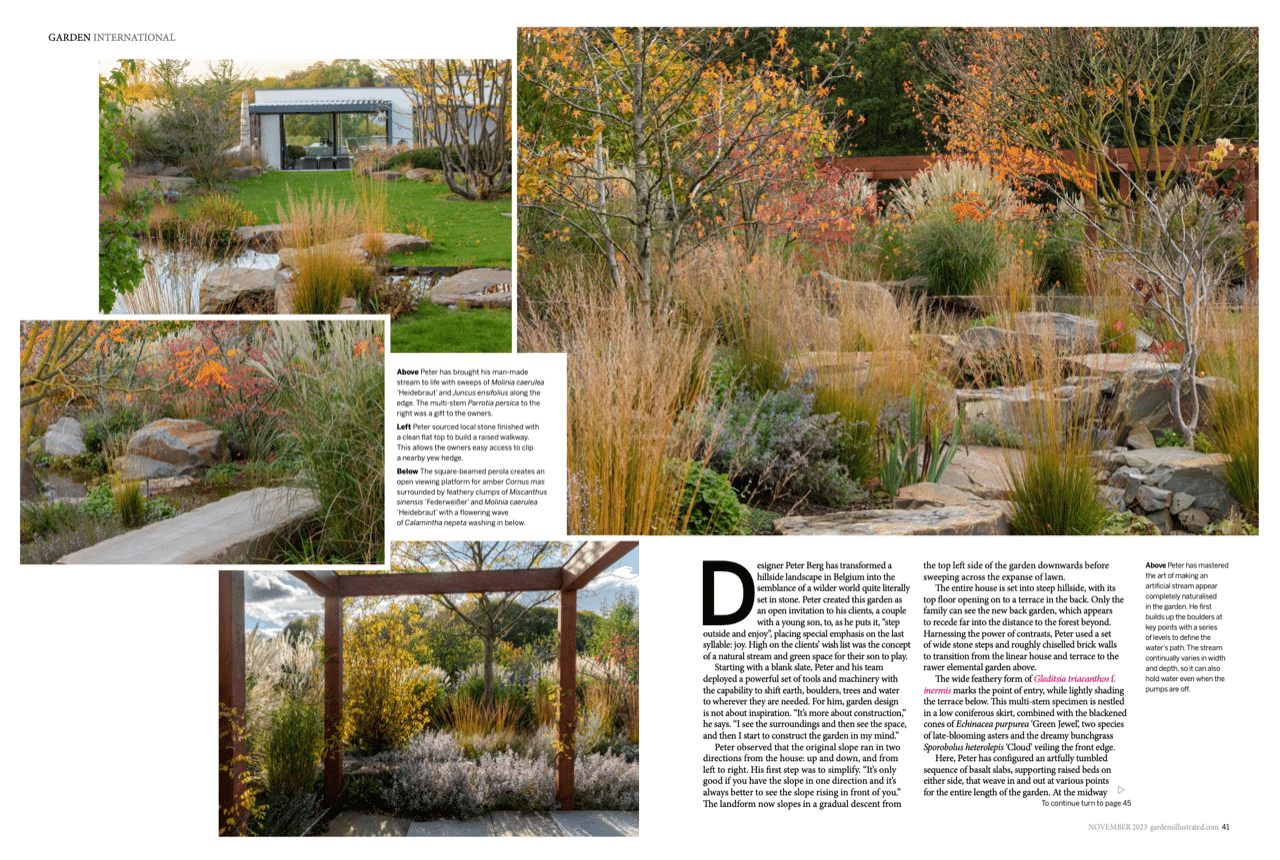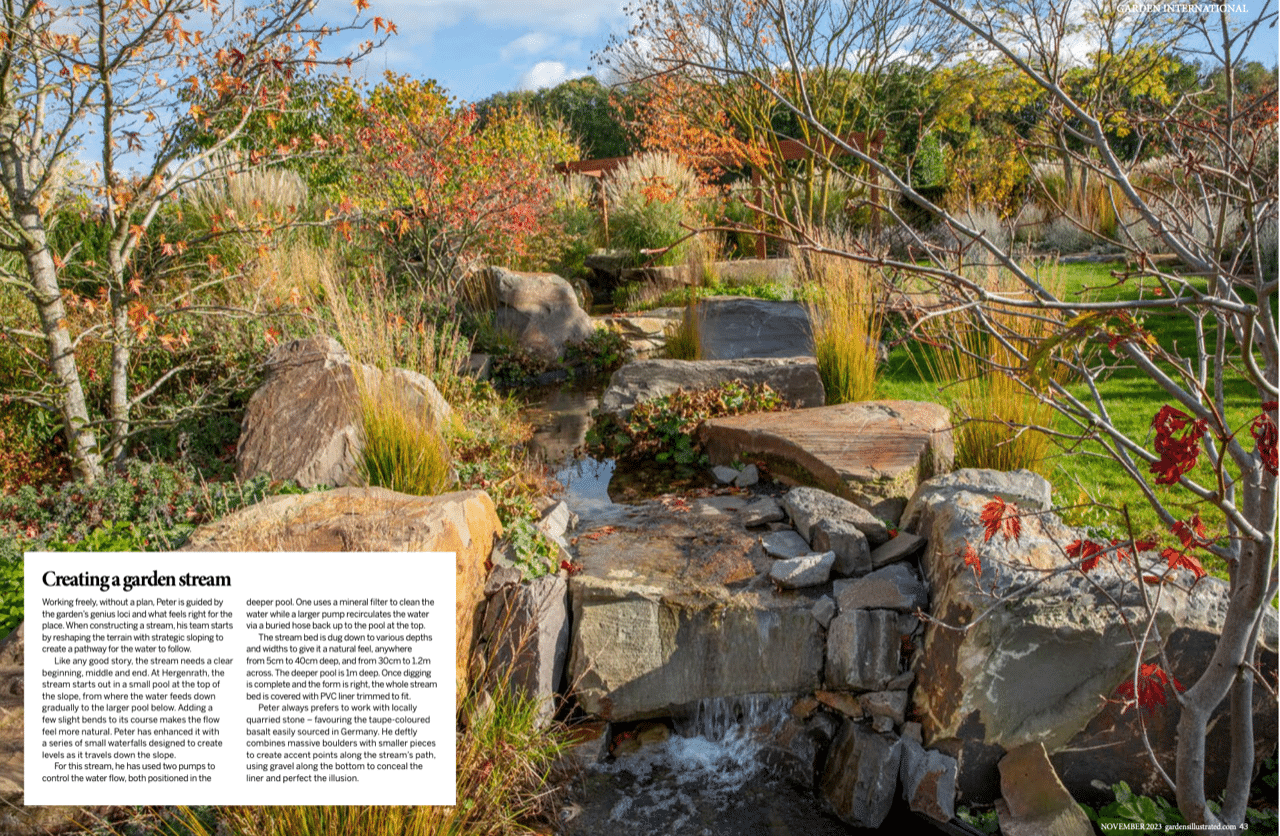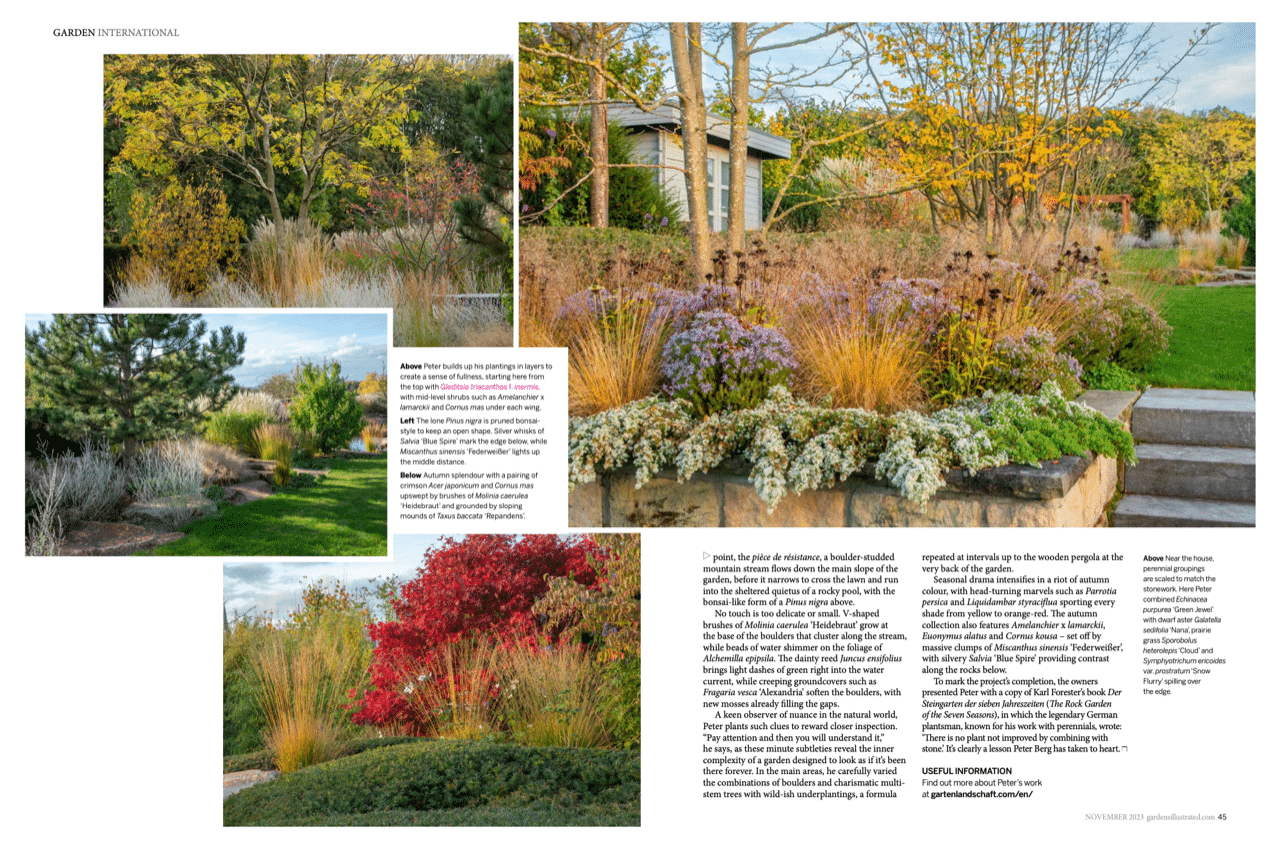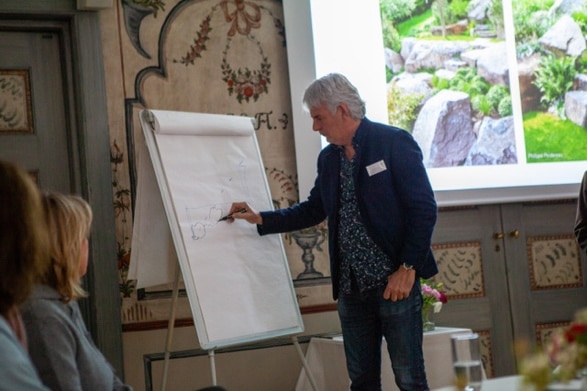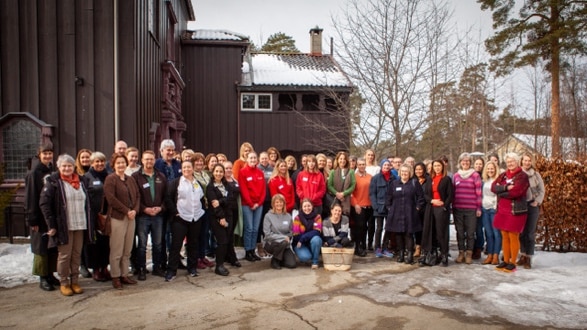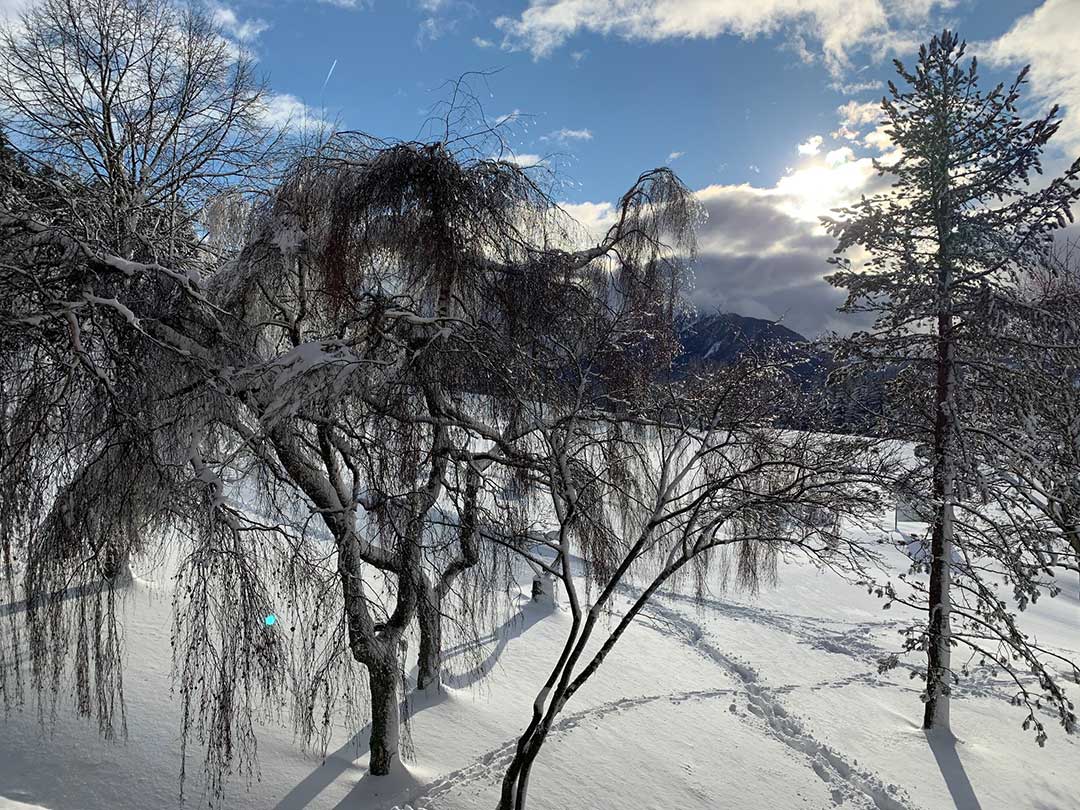In the “Augustinum” retirement home in Bad Neuenahr, the garden destroyed by the 2021 flood was not only rebuilt but completely redesigned to offer the 300 senior citizens a more liveable environment.
Peter Berg and his team are delighted with the positive effect the natural retreat with a large pond, natural stone, shrubs, grasses and perennials has had on the residents of the “Augustinum” since the start of construction and even more so after completion.
The design works with different heights and space-defining stone structures, allowing an artificial pond to be modelled. The pond was designed with peninsulas, islands, organic shapes and different depths to create the illusion of a larger body of water and to provide ever-changing perspectives.
In addition to the pond, the surrounding area was designed and planted. Peter Berg deliberately used traditional manual labour, supported by machine power, to add as much detail as possible to this garden. Natural stones were laid and beautiful specimen trees, grasses and shrubs were planted to create a lively and harmonious overall picture.
Due to the approaching winter, the realisation of the garden had to be completed within a tight time frame. Throughout the project, Berg liaised closely with the residents and the management of the facility in order to take their needs into account as much as possible. This close communication made the project a matter close to Peter Berg’s heart.
More details and insights can be found in this video.

